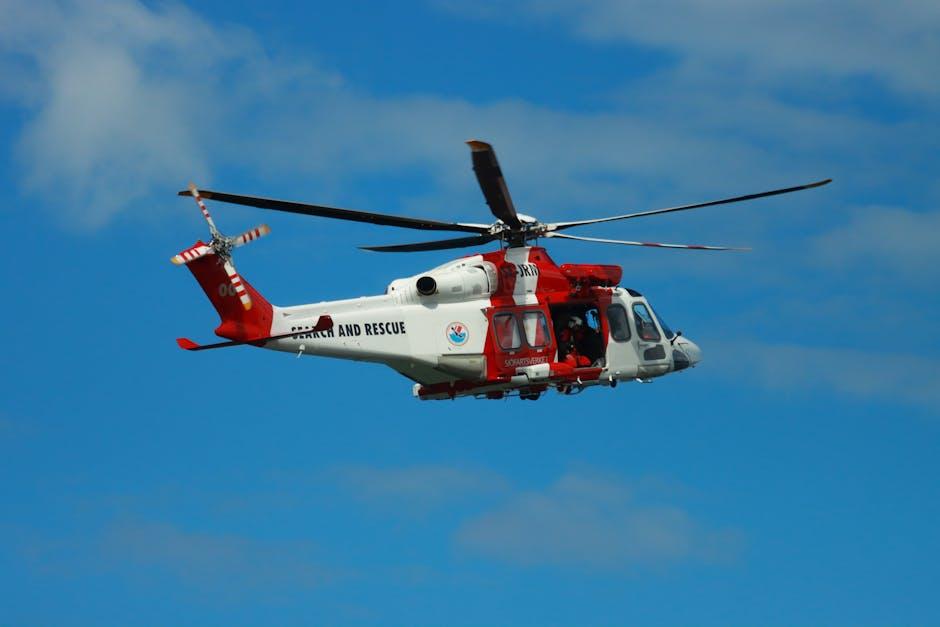When planning a trip, especially to remote or unfamiliar destinations, ensuring peace of mind is as essential as packing your suitcase. One of the key considerations for travelers is whether travel insurance covers medical evacuations, a crucial component that can make a significant difference in an emergency. Understanding the intricacies of travel insurance policies and the extent of their coverage is not only prudent but essential for safeguarding your well-being while abroad. This article aims to demystify the specifics of medical evacuation coverage within travel insurance, empowering you with the knowledge to make informed decisions before embarking on your next adventure. Whether you’re an occasional tourist or a seasoned globetrotter, gaining clarity on this topic will enhance your travel security and confidence.
Understanding Medical Evacuations in Travel Insurance
When it comes to the intricacies of travel insurance, understanding the provisions for medical evacuations is crucial. These evacuations are essential when a traveler encounters a severe medical issue that cannot be adequately treated at their current location. Generally, travel insurance policies cover the costs associated with transporting the insured to the nearest suitable medical facility. However, the specifics can vary significantly, and it’s vital to review your policy carefully to comprehend what is included.
- Coverage Limits: Most policies will have a cap on the amount they will pay for medical evacuations. Be sure to check if this limit is sufficient for the regions you plan to visit.
- Pre-Authorization: Many insurers require pre-authorization before any evacuation can take place. Failing to get this approval could mean that you bear the cost.
- Choice of Hospital: The insurance provider typically decides the medical facility you will be evacuated to, based on proximity and capability.
- Exclusions: Conditions like high-risk activities or pre-existing conditions might be excluded from evacuation coverage, unless explicitly stated otherwise.
Understanding these key aspects can provide peace of mind and ensure you are adequately prepared should an emergency arise during your travels.

Key Benefits of Including Medical Evacuation in Your Travel Plan
When planning your next adventure, including medical evacuation coverage in your travel insurance can offer peace of mind and substantial financial protection. Here are some of the primary advantages:
- Financial Security: The cost of an emergency medical evacuation can run into tens of thousands of dollars. With coverage, you can avoid these unexpected expenses, ensuring that your journey doesn’t become a financial burden.
- Access to Quality Care: If you find yourself in a region where medical facilities are inadequate, evacuation coverage ensures you can be transported to a facility that meets your healthcare needs.
- Peace of Mind: Knowing that you’re covered for unforeseen emergencies allows you to travel with confidence, focusing on enjoying your trip rather than worrying about potential risks.
- Comprehensive Assistance: Most policies provide 24/7 support, helping you navigate logistics, communicate with healthcare providers, and manage the complexities of an evacuation process.

Common Exclusions in Medical Evacuation Coverage
When reviewing your travel insurance policy, it’s crucial to understand the typical exclusions that might affect medical evacuation coverage. Often, policies do not cover evacuations related to pre-existing medical conditions unless you have a specific waiver. High-risk activities, such as extreme sports or adventure tourism, might also be excluded unless additional coverage is purchased. It’s essential to check if the policy covers evacuation from remote or isolated locations, as some providers limit coverage to more accessible areas.
- Evacuations due to war or civil unrest are typically not covered.
- Costs related to self-inflicted injuries or those incurred while under the influence of drugs or alcohol are generally excluded.
- Some policies may exclude coverage for pregnancy-related complications unless they are unforeseen.
- Medical evacuations resulting from participation in illegal activities are also not covered.
It’s advisable to thoroughly read the terms and conditions of your policy and consult with your insurance provider to clarify any doubts. Being informed will ensure you have the right coverage when you need it most.

Expert Tips for Choosing the Right Travel Insurance
- Assess Your Needs: Before diving into policy details, evaluate the specific risks and needs associated with your trip. Consider factors like your destination, planned activities, and any pre-existing health conditions. This assessment will guide you in selecting a policy that offers adequate coverage, especially for medical evacuations.
- Check Coverage Limits: Not all policies offer the same level of coverage for medical evacuations. Be sure to check the limits and ensure they are sufficient for potential high-cost situations, such as air ambulances or international repatriation. Look for policies with no caps on evacuation expenses for comprehensive protection.
- Provider Network: Investigate the insurance provider’s network of medical facilities and emergency services. A well-established network can facilitate quicker and more efficient evacuations, reducing stress during emergencies.
- 24/7 Assistance Services: Opt for insurance that includes round-the-clock assistance services. These services can be invaluable, offering immediate support and coordination during medical emergencies, ensuring a smooth evacuation process.
- Read the Fine Print: Carefully review the policy terms to understand what is included and excluded. Some policies may have specific exclusions or conditions for medical evacuations, such as the requirement for pre-approval or restrictions based on the nature of the illness or injury.

